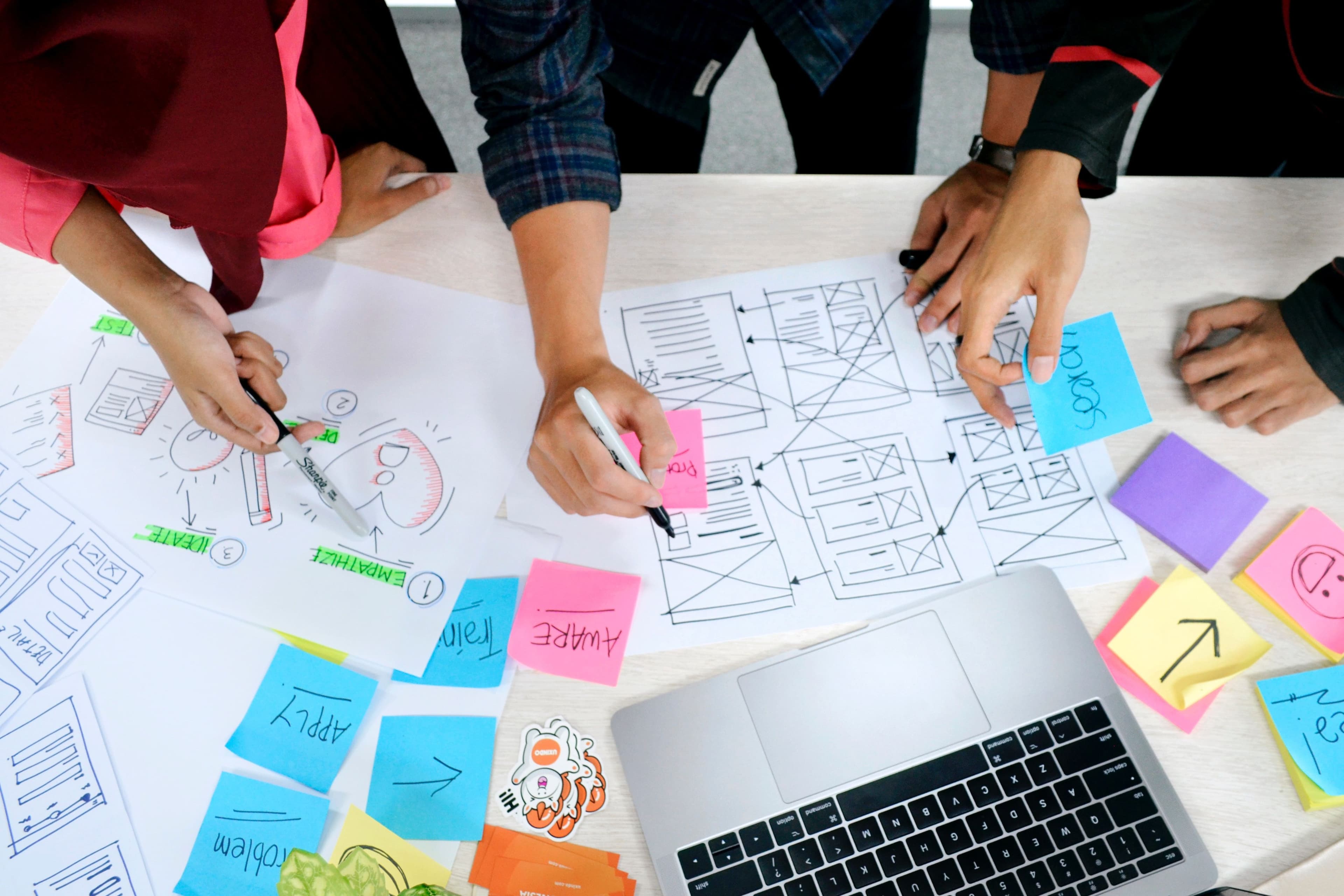The principals of strategic design can successfully guide us through disruption to innovation – and progress.
Life is short. Humans are quick to forget, and even quicker to get distracted. What we take for granted today was yesterday’s game-changing breakthrough, made possible because someone saw reward where others saw only risk.
Currently, on the cusp of an astonishing convergence between socio-economic dynamics and technology that is dramatically amplifying change, our society is already feeling the effects of a full-scale revolution that is only gathering speed. When social, economic, and technological forces come together, they create a feedback loop that hits the fast-forward button on transformation.
By enabling connections and communications that were previously impossible, social media also gave people the tools we needed to better investigate, formulate, assess, review and adjust our transformation processes.
We get better at change the more we talk about it with other people and share our experiences of change.
Surviving change: enabling new business models
Technology changes how we live and work, creating fresh opportunities for businesses to innovate with new products and services. For example, e-commerce has empowered businesses to reach customers in new ways and offer products and services that were previously unimaginable.
This in turn has led to the disruption of traditional organisational models. Also, the rise of digital media disrupted the traditional media industry, much as the rise of automation and artificial intelligence is disrupting the job market.
Yet change is not new – neither is disruption. Humans have had millions of years to grow, explore, adapt, evolve and survive in response to changing environments and constantly evolving threats.
In our industry, content and buying experiences are converging – and the relationship is becoming bi-directional. People can now buy where they consume content and consume content where they buy, and we will soon take for granted the ability to purchase products directly on social media, within gaming environments and on content streaming platforms.
Amplifying change: daring to face the unknown
As we are painfully aware, people are intrinsically change-resistant. Reluctance to give up familiar ways of achieving economic and social success, managing risk and assuring continuity is understandable – but misplaced.
For all the potential of effective digital experiences, there are many constraints, not least of which is the overwhelming urge to reimpose traditional methods by simply grafting old patterns onto the new. This is where businesses need to shift their mindset about technology and change. We should not want to adopt technology because it simply leads to doing old things in new ways. Instead, we should embrace technology, as this leads to discovering new opportunities.
Fear of the unknown is ultimately a question of perception; some see change as a threat, others, as an opportunity A new paradigm can be disruptive and the implied demands of interconnected ‘dynamic reciprocity’ extend beyond our current systems of education and training. So how can businesses flip the script on change and reposition threats as opportunities? Through enlightenment and exposure, which comes from curiosity, and results in clarity.
Building digital experiences through strategic design
Strategic design is a practical, inspirational way of looking at the world. It provides a framework for curiosity that lets us discover our purpose in the world and gives us the tools to leverage our collective passion and manifest that purpose. In other words, strategic design is a discipline. It is the logical progression from curiosity to fulfilment, that starts with asking: ‘what would you like to do?’
In this way, strategic design can be used to guide people to an outcome that is informed by their own discovery. Once people understand all the information that they hold, strategic design provides a blueprint for making practical decisions that lay the foundation for the way forward. As such, it is an adventure that takes us from inspiration to insight, evolving into the ideation and manifesting through implementation.
Strategic design is not about handing people the answer to their questions; it’s about giving them the interrogation tools that spark the kind of curiosity and leads to positive innovation and progress, toward a future in which we are meaningfully connected with the people and world around us, to advance the goals of humanity.
Facing the future with bravery
Strategic design, as a discipline, results in the bravery necessary to address obstacles and reframe them as opportunities. ‘What would we like to gain?’ and ‘what would be the best possible outcome?’ are powerful questions that can be translated into a workable plan to guide us as we figure out how best to shape businesses and digital experiences for the benefit of everyone.
Strategic design is an extraordinarily powerful process that cultivates creativity and collaboration for people and businesses, regardless of their journey. It is capable of solving commercial product and service challenges but equally capable of solving systemic community-focused challenges on a global level. Simply by asking ‘How might we….?’ it becomes possible to use our innate curiosity as a springboard to create certainty and fulfil our desire for reassurance and continuity.
This allows us to move from a position of fear to confidence as we shape our future and reimagine the way we face the unknown.










